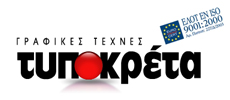Prefectures of Crete
Chania Prefecture
Municipality of ChaniaMunicipality of ApokoronasMunicipality of PlataniasMunicipality of KissamosMunicipality of Kandanos - SelinosMunicipality of GavdosMunicipality of Sfakia
Rethymnon Prefecture
Municipality of RethymnonMunicipality of MylopotamosMunicipality of AmariMunicipality of Agios VasiliosMunicipality of Anogia
Heraklion Prefecture
Municipality of HeraklionMunicipality of MaleviziMunicipality of Archanon - AsterousionMunicipality of FestosMunicipality of GortynaMunicipality of ChersonissosMunicipality of Minoa PediadosMunicipality of Viannos
Lassithi Prefecture
Municipality of MirampeloMunicipality of SitiaMunicipality of IerapetraMunicipality of Oropedio
Minoan Villa of Makri Gialos
The wonderful position, in which the village Makri Gialos is located,thirty threekm (33) south of Siteia on the Lybian Sea, was used by the Minoans and important traces of habitation have been found.
It is a minoan villa at the position Plakakia of Makri Gialos, west of the modern settlement. It dates back to the Late Minoan IB period (1480 - 1425 B.C.) and from architectural view it is a miniature of a minoan palace. The villa which is located very near a bay, where there was very possibly a harbour in the minoan times, controlled the agricultural production of the coastal plain and the maritime operations of the south coast.
In the middle of the building complex appears the large central yard, around which the rest of the rooms are arranged It has strong external walls, yards, many rooms, doorsteps, paved floors and rooms where the sacred tree was possibly worshipped.
On the northern and northeastern side of the central yard the is a series of six and five pillars from which only the bases are preserved, defining the position of a built altar that was found in the north of the yard. The main entrance of the villa was in the north but there was also another in the west. The roof was covered with canes and clay, with the method that was used until recently in the cretan rural architecture. The villa was destroyed by fire.
Among the movable finds, the most important were the clay and stone vessels, statuettes and a seal stone with the depiction of a sacred ship, a priestess and a holy palm tree in the centre. The architectural style, the small number of household rooms and the importance of the finds, like the seal stone, attest the religious character of the villa, which could be an important religious center of the area.
Various random finds came to light at times, but systematic excavations started in 197. During the excavations an important minoan cottage was also found. The research was completed in 1977 an proved that the cottage was destroyed by fire.
(Author : Chr. Sofianou, Archeologist)



 ENGLISH
ENGLISH







